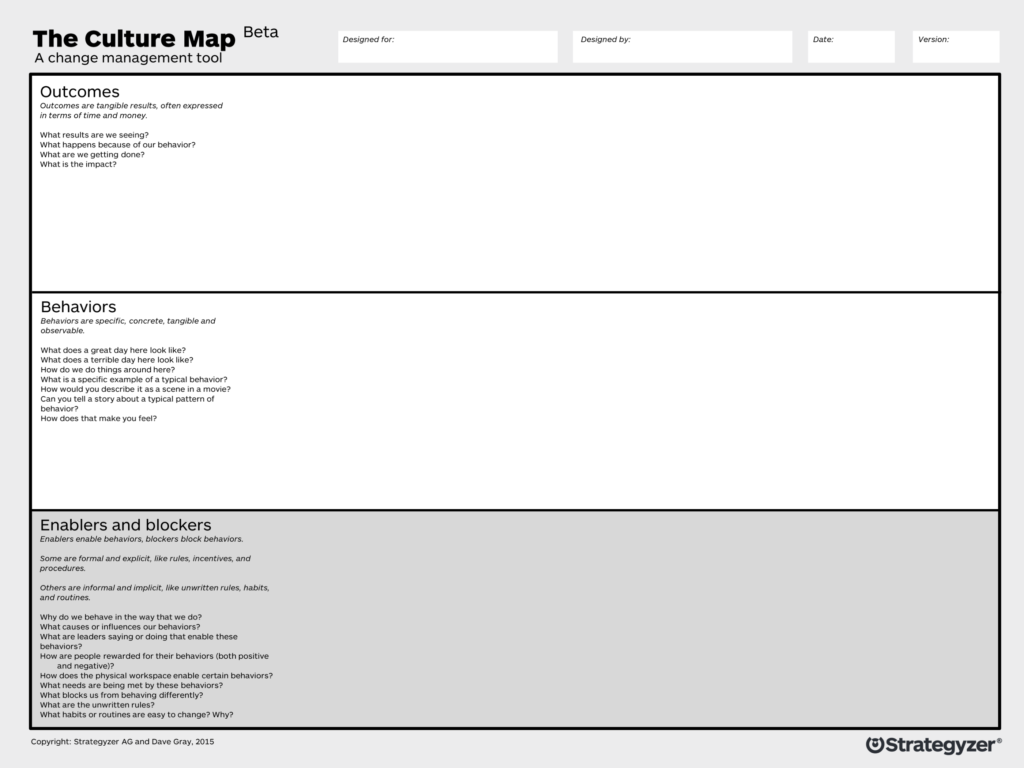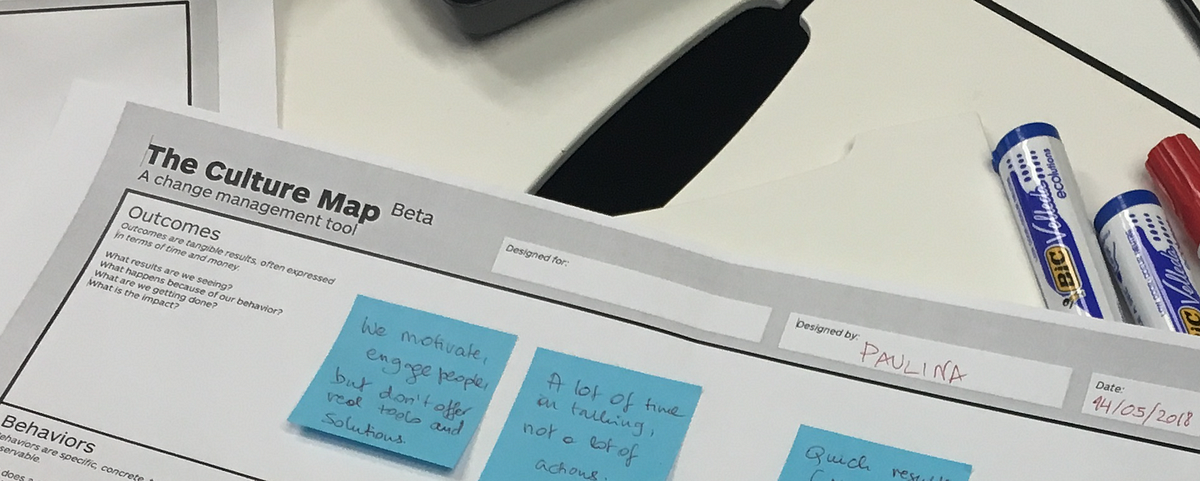This is what I learned using the Culture Map tool with a corporate team.
First a bit of context: I have been following Dave Gray’s and Alexander Osterwalder’s work for the past years and got really excited when Alex presented the Culture Map back in 2015 at the Lean Startup Conference in San Francisco.
Since then I’d been looking for an opportunity to use the tool. I recently met Dave Gray who gave me a 30mins run down on how he uses the Culture Map. I complemented my research with Best Practices: How To Use The Culture Map and was ready to go!

Sitting down with the team, we took about 2.5 hours together to map out their culture. After explaining the tool and what to expect from it, the participants had about 10 mins to fill out the map individually. We then had a conversation about different inputs each person had and aimed at creating a collective Culture Map. Here are my takeaways.
The Culture Map created and framed the conversation
For me, this is the main benefit of the tool. The topics discussed would not be talked about or analysed as a team otherwise. For instance, the team highlighted the freedom they have in their work hours and the tools they can use. Asking why does the team have such freedom (the enabler) and what this freedom allowed them to achieve (the outcomes) gave them a better understanding of what’s going on.
Behaviours have positive and negative outcomes
When talking about the outcome of a specific behaviour, we found for each positive outcome, there was also a negative outcome. For instance the team could move fast and make some decisions on their own. The downside of this was that it created a disconnected with to the rest of the business that couldn’t behave that way. Bringing this to light now allows the team to see it and think whether to continue with or adjust the behaviour. It becomes now a conscious decision.
Identify behaviours as things We do…
The best practices suggest to start by mapping out behaviours. This worked well for us. To help define team behaviours, I found it useful to start the phrase with We + some verb. “We release code before it’s perfect”. “We have lunch together as a team”. For each behaviour, each team member had a story to tell. This supported the collective understanding of the team culture.
Don’t include the boss?
This is more of a question then a takeaway. The session worked well as the team talked openly and exposed how they work in a non-judgemental way. I imagine the exercise might not run smoothly for some teams if the boss is around. It can prevent a frank and honest conversation, leading to an unremarkable result.
As a bonus we used the Culture Map to map the “want to have” culture. Here again, fundamental conversation emerged, questioning the purpose and ambitions of the team.
So was it worth the 2.5 hours? Absolutely. The tool is great to frame the conservation and bring the invisible to light. Do you know how your team behaves? Why do they behave the way they do, does this have a positive or negative impact?

If you want to learn more about how to think and innovate like a startup, contact me on Tango.
